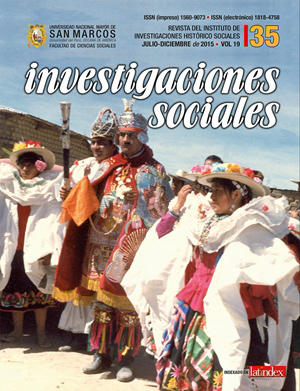Territory, Men and Cattle in Piura’s Region. Experiences of social construction of livestock (cattle) farms in the 18th century
DOI:
https://doi.org/10.15381/is.v19i35.12124Keywords:
Piura, livestock, geography, country state, indigenous communitiesAbstract
In this essay we approach a subject that has been little studied in Piura›s regional historiography: the man as an regional landscape modeller agent. We seek to describe characteristics of colonial geography related to a regional northern space, explore dynamics and flows of livestock (cattle) production farms, and study indigenous communities people. We synthesize a chapter of the «Piura’s Economic Report (1804)», written by don Joaquin de Helguero, in order to introduce you knowledge about ecological archipelagoes that were named at that time «Los Valles» (“The Valleys”), and also Piura’s mountains. Diversity exploration of variables tied to geographical dimensions and economy will allow us to enter in the knowledge of the conjuncture of regional crisis and the particular situation of the indigenous and highland companies that crosses this region after the FEN of 1791Downloads
Published
Issue
Section
License
Copyright (c) 2015 César Espinoza Claudio

This work is licensed under a Creative Commons Attribution-NonCommercial-ShareAlike 4.0 International License.
AUTHORS RETAIN THEIR RIGHTS:
a. Authors retain their trade mark rights and patent, and also on any process or procedure described in the article.
b. Authors retain their right to share, copy, distribute, perform and publicly communicate their article (eg, to place their article in an institutional repository or publish it in a book), with an acknowledgment of its initial publication in Investigaciones Sociales.
c. Authors retain theirs right to make a subsequent publication of their work, to use the article or any part thereof (eg a compilation of his papers, lecture notes, thesis, or a book), always indicating the source of publication (the originator of the work, journal, volume, number and date).













